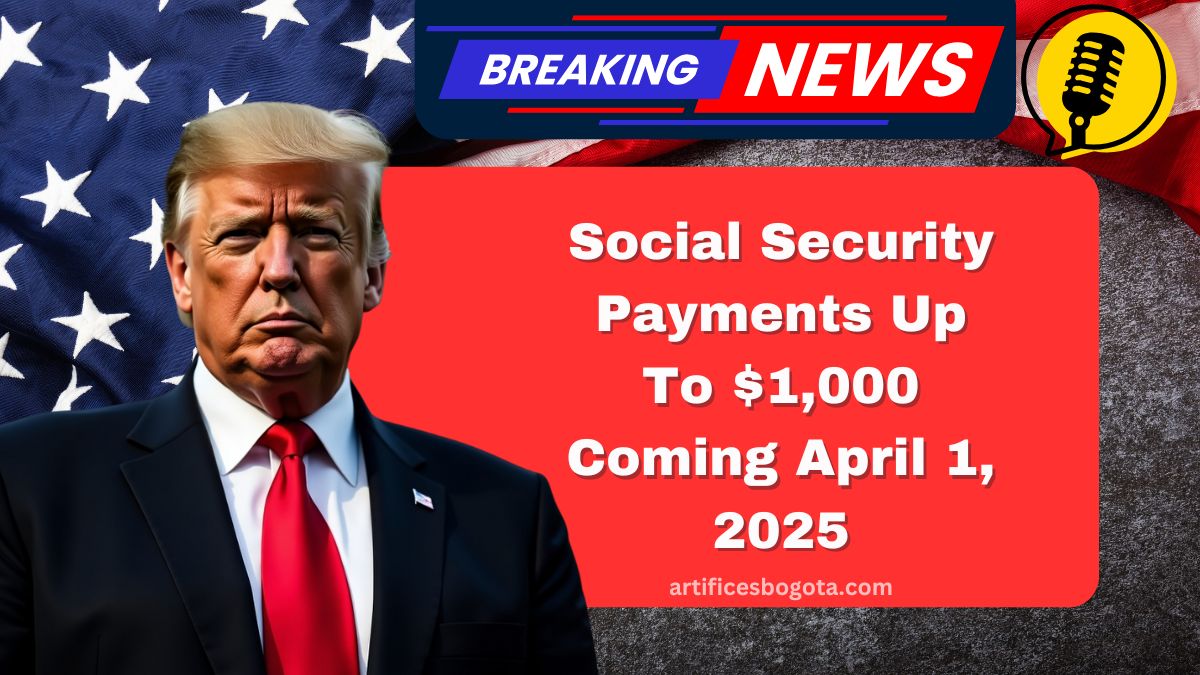The Social Security Administration (SSA) is scheduled to distribute Supplemental Security Income (SSI) payments on Tuesday, April 1, 2025.
These payments are designed to assist individuals with limited income and resources who are aged 65 or older, blind, or disabled.
Understanding the eligibility criteria, payment amounts, and upcoming payment schedules is crucial for beneficiaries to manage their finances effectively.
Eligibility for SSI Payments
To qualify for SSI payments, individuals must meet specific criteria:
- Age: Must be 65 years or older.
- Disability: Individuals under 65 must be blind or have a qualifying disability.
- Income and Resources: Must have limited income and resources.
- Citizenship: Must be a U.S. citizen or meet specific non-citizen requirements.
It’s important to note that SSI eligibility is based on financial need and is separate from other Social Security benefits, which are based on work history and contributions.
SSI Payment Amounts for 2025
The maximum federal SSI payment amounts for 2025 are as follows:
| Recipient Category | Monthly Maximum Payment |
|---|---|
| Individual | $967 |
| Couple (both eligible) | $1,450 |
| Essential Person | $484 |
These amounts are subject to reduction based on countable income and resources. Additionally, some states offer supplementary payments, which can increase the total benefit amount.
April 2025 Payment Schedule
The SSA has outlined the following payment schedule for April 2025:
- April 1: SSI payments for all recipients.
- April 3: Payments to those who have been receiving Social Security benefits since before May 1997 and individuals receiving both Social Security and SSI.
- April 9: Payments to beneficiaries with birthdays between the 1st and 10th of any month.
- April 16: Payments to beneficiaries with birthdays between the 11th and 20th of any month.
- April 23: Payments to beneficiaries with birthdays between the 21st and 31st of any month.
Beneficiaries are encouraged to enroll in direct deposit to ensure timely receipt of payments. Mailed checks may experience delays due to postal service schedules.
Recent Changes Affecting SSI Recipients
Several policy updates have been implemented that may impact SSI recipients:
- Elimination of Food Assistance Penalties: Effective September 30, 2024, the SSA no longer considers food provided by others as in-kind support, meaning SSI benefits will not be reduced due to food assistance received from friends, family, or charities.
- Social Security Fairness Act: Signed into law in January 2025, this act repealed the Windfall Elimination Provision (WEP) and Government Pension Offset (GPO), allowing certain public sector retirees to receive increased Social Security benefits.
Understanding SSI and Social Security Benefits
While both SSI and Social Security benefits are administered by the SSA, they serve different purposes and have distinct eligibility requirements:
- Supplemental Security Income (SSI): A needs-based program providing financial assistance to individuals with limited income and resources who are aged, blind, or disabled.
- Social Security Benefits: Based on work history and contributions to the Social Security system, providing retirement, disability, and survivor benefits.
It’s possible for individuals to qualify for both SSI and Social Security benefits simultaneously, depending on their circumstances.
Staying informed about eligibility requirements, payment schedules, and policy changes is essential for SSI recipients to effectively manage their benefits and financial well-being.
FAQs
How can I apply for SSI benefits?
Individuals can apply for SSI benefits by visiting their local Social Security office or by scheduling an appointment through the SSA’s official website.
Will receiving food assistance affect my SSI payments?
No, as of September 30, 2024, food assistance received from others does not affect SSI payment amounts.
Can I receive both SSI and Social Security retirement benefits?
Yes, it’s possible to receive both if you meet the eligibility criteria for each program.
